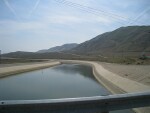 At the now infamous July 27, 2010, Davis City Council meeting that dealt with several complex issues and yet concluded at 8:30 pm, city staff presented two current alternative projects for the Waste Water Treatment Plant.
At the now infamous July 27, 2010, Davis City Council meeting that dealt with several complex issues and yet concluded at 8:30 pm, city staff presented two current alternative projects for the Waste Water Treatment Plant.
The first was the Davis alternative and the second a Woodland-Davis Regional Treatment Plant. According to the staff report, “Staff believes that either option has the ability to result in a system that provides effective wastewater services to Davis residents and businesses. In essence, neither of the two options would be a wrong decision from an engineering or financial perspective.”

According to the staff report, “The major reasons for the recommendation include the higher certainty of completion and compliance, lower initial capital costs, and fewer governance issues with the Davis alternative. The initial capital costs are offset by lower operating costs under the Woodland/Regional alternative. Staff also analyzed lesser issues to determine whether there are fatal flaws with either alternative, and to determine whether they would be sufficient to support the Woodland/Regional alternative. The Davis alternative provides better support for wastewater reuse, preservation of the Davis Wetlands, and locational considerations.”
Staff does provide a caveat though, “We recognize that we have not fully explored governance or financial options with the City of Woodland. Therefore we recommend the Council identify the Davis alternative as its preferred alternative, but direct the City Manager to work with the City of Woodland to determine whether it is possible to craft an agreement that would change the recommendation in favor of the Woodland/Regional option.”
There are two problems that the city must fix by October 2017, although it seemed that recommendations by two consultants held forth the possibility that the city could delay the construction of the wastewater option until after the city constructs its new surface water project through a Joint Powers Authority with the City of Woodland.
The staff report suggests that those two changes are first, “Effluent that reaches the Yolo Bypass must meet higher standards for water quality. From an engineering perspective, this means “tertiary” treatment to eliminate additional pollutants.”
Second, “The current practice of draining treated wastewater through the Davis Wetlands into the Yolo Bypass must cease, because the ammonia loads from the birds in the Wetlands cause the discharge to exceed allowable limits.”
According to the staff report, the Davis alternative “would involve modifications to the existing plant to provide conventional activated sludge treatment, tertiary filtration, and chlorine disinfection. If started now, engineering and construction would be complete in 2016.”
On the other hand, the Woodland/ Regional alternative “consists of converting the City of Woodland Water Pollution Control Facility to a regional facility that would provide treatment and disposal of wastewater from the Cities of Davis and Woodland. This would benefit the City of Woodland by providing the solids handling capability that the plant does not currently have and reduce their long-term operating costs.”
Costs would be a huge consideration for this project.
Writes the staff report, “The base project cost for the Davis plant is approximately $100M while the cost for the Regional plant is $122M. While the numbers clearly show that it is more expensive to build a new plant compared to modifying and expanding an existing plant, the table also identifies the added cost of close to $50M to convey Davis waste water seven miles north to a regional plant with the transmission line and buy-in costs.”
However, the difference in the two projects is small in terms of costs to the average residential customer. “While this pushes the total project costs for the regional plant well above the Davis option, because the large up front capital costs are expected to be financed over a 30-year period, the impact of this to the average residential customer will be a maximum of about $1 per month,” says the staff report.
Here is the city projected utility rates:

However, it is unclear to me what these numbers mean. Are they a monthly figure? Do they represent the entire bill or the increase on top of the current bill?
The city’s outside consultants on this issue, Tchobanoglous and Schroeder, seemed to suggest that the city could build the water supply project, thus reducing some of the out-of-compliance discharges and avoid having to build the expensive water supply project concurrently with the wastewater treatment plant. Now we seem to be moving back into that direction.
The question from the start has been one of cost. Can the average ratepayer afford the increased charges from the two projects? From the city charts, that is unclear, because we need to see what the total impact is on the average water user to evaluate that question.
Unfortunately, the piecemeal process that we have undertaken has avoided such broad-based questions. We have acted separately on the two projects, exploring the issues in isolation rather than altogether and that suggests we may miss some key costs down the line.
—David M. Greenwald reporting






dmg: “The city’s outside consultants on this issue, Tchobanoglous and Schroeder, seemed to suggest that the city could build the water supply project, thus reducing some of the out-of-compliance discharges and avoid having to build the expensive water supply project concurrently with the wastewater treatment plant. Now we seem to be moving back into that direction.”
And my question to this would be why are we moving back to the old model of doing both projects (surface water/wastewater treatment upgrade) at the same time? I would like an explanation why it is necessary to “upgrade” the wastewater treatment plant NOW. I’m willing to listen, but feel the public is owed a reasonable explanation.
“The question from the start has been one of cost. Can the average ratepayer afford the increased charges from the two projects? From the city charts, that is unclear, because we need to see what the total impact is on the average water user to evaluate that question.”
Based on what I have heard over the last several years, ultimately you can expect your water/sewer rates to triple or quadruple. Many low income, middle income and those on fixed incomes are going to find this dramatic rate increase unsustainable. Especially in light of other taxes that are looming on the horizon – school parcel tax, increase in state taxes to cover the state budget shortfall, hidden taxes in the form of fees that will be imposed by federal/state/local gov’t/businesses, etc.
“I would like an explanation why it is necessary to “upgrade” the waste water treatment plant NOW. “
In the present economic climate and the budget crises that are being felt by CA city budgets, politically, it is, IMO, CERTAIN that a request for an extension in compliance with the CA waste-water treatment standards would be granted. The disingenuous history of the city’s efforts to manufacture “consent of the governed” for these projects has been such as to create an almost total lack of trust. This needs to be addressed if these projects are to proceed.
the ammonia loads from the birds in the Wetlands cause the discharge to exceed allowable limits.”
So the birds are the problem.
Don Shor: “So the birds are the problem.”
I wondered about that too!
“In the present economic climate and the budget crises that are being felt by CA city budgets, politically, it is, IMO, CERTAIN that a request for an extension in compliance with the CA waste-water treatment standards would be granted.”
Totally agree, now’s not the time to be saddling small towns with $100 million projects.
THere are roughly 23,000 households in Davis. If the City borrowed $100 million and financed it at 5.5% MUNI rate (depending upon our credit rating) that implies an average of about $25 per month per household.
I assume the costs will be weighted by use so lower income households would generally pay less and its easy to set up lifeline rates which subsidize low income users. However I don’t see how the math works out to $1 a month–maybe I am missing something here. If we financed a slightly more expensive project over a larger customer base then the costs go down but I don’t see how you get $1 per month.
My main concern is that I have lost confidence in staff and our CC–and is there a hidden agenda here in the form of forced future growth to pay for this? Zipcargate was annoying, but $100 million is real money. We should try not top screw this up.
[quote]In the present economic climate and the budget crises that are being felt by CA city budgets, politically, it is, IMO, CERTAIN that a request for an extension in compliance with the CA waste-water treatment standards would be granted…[/quote]
OK… how do you explain that ~ 2 weeks ago the electorate defeated a measure that would have relaxed AB 32? Why would State regulators, trying to justify their very existence, “back off”? Not logical, given trends, that agencies would get a ‘pass’, particularly when ‘violations’ lead to fines, which lead to increased revenue (no, not ‘earmarked’) which gives ‘job security’ to the regulators, and generates money for the State.
The City of Dixon has been operating under a Cease and Desist Order for years. The water quality control board has granted extensions of the CDO, most recently in 2008, so long as the city has a timeline in place for compliance. But in the absence of a timeline, the city was facing steep fines. So it is not certain that the request would be approved, especially if there is no compliance process in place. Should the city be able to prove that the surface water project would obviate the discharge problem, perhaps the water quality board would accept that. Counting on any particular ruling by a state agency (whose mandate is to guarantee clean water to Californians) doesn’t seem like a safe bet to me.
Surely the birds can’t be the problem. The real problem is that the water is of dubious quality, and their “ammonia loads” (which are going to be deposited SOMEWHERE!) push this particular water over some limit.
[i]”2 weeks ago the electorate defeated a measure that would have relaxed AB 32?”[/i]
First, AB32 has nothing to do with water pollution or wastewater. And second, the electorate would have no part in a decision to grant a waiver.
[quote]First, AB32 has nothing to do with water pollution or wastewater. And second, the electorate would have no part in a decision to grant a waiver. [/quote]It (rejection of Prop. 23) has [u]everything[/u] to do with relaxing environmental standards. On your second point… the electorate SHOULD, and theoretically does, elect the folks who appoint/hire/control the regulators who decide whether a waiver will be approved. Wrong again.
it amuses me that the moment davis homeowners are asked to pay for the cost of cleaning their waste water up to adequate standards, all these lifelong democrats start talking like republicans: “why can’t we just say to hell with the law and dump whatever waste we want in the water?”
IF YOU PPL ONLY KNEW THAT THIS DEMAND FOR MONEY IS JUST A FRONT FOR THE PUBLIC WORKS UNION! IF YOU PPL REALLY THINK THESE CROOKS WILL ACTUALLY SPEND THE MONEY ON INFRASTRUCTURE, THEN YOU’RE A BUNCH OF IDIOTS AND YOU ALL DESERVE TO DRINK YOUR RADIATION, FECES INFESTED GROUNDWATER..
THERE’S MORE THAN JUST BORON IN YOUR WATER PPL..
GET WITH THE FRIKIN PROGRAM..
THE REASON WHY “CHANGE’ NEVER CAME TO WASHINGTON IS BECAUSE WE COULDN’T EVEN IMPLEMENT IT IN OUR OWN LOCAL GOVERNMENT..
THIS CITY IS AN PERFECT EXAMPLE OF A BANANA REPUBLIC.
LOIS WOLK VOTED AGAINST THE PLASTIC BAG BAN AND SHE CLAIMS TO BE PRO ENVIRONMENT..
WHAT A BUNCH OF HYPOCRITS AND IDIOTS!!! ENJOY YOUR DIRTY POLLUTED TRAIN TRACK HORN BLOWING WOOD BURNING POLLUTED LITTLE TOWN.
UCDAVIS HAS A BUNCH OF NORTH AND SOUTH KOREAN SCIENTISTS AND THEY ARE WILLFULLY POLLUTING OUR TOWNS AND DUMPING NANO TECHNOLOGIES AND BIOLOGICAL
POLLUTANTS INTO OUR WATER AND AIR..
WHEN ARE YOU PPL GOING TO GET IT?????
WAKE UP PEOPLE..YOU’RE BEING DECEIVED, USED AND LAUGHED AT.
it amuses me that the moment davis homeowners are asked to pay for the cost of cleaning their waste water up to adequate standards, all these lifelong democrats start talking like republicans: “why can’t we just say to hell with the law and dump whatever waste we want in the water?”
WU MING!!!! SO RIGHT AND INCITEFUL YOU ARE….THEY ARE THE BIGGEST HYPOCRITS, BUT DON’T WORRY, THE REAL DEMOCRATS ABANDONED SHIP A LONG LONG TIME AGO. THIS IS THE REASON WHY DAVIS IS SUCH A SHIT HOLE..
THE RIGHT WING REPUBLICANS AND SCIENTISTS MOVED IN AND WOOOPS…THERE WENT THE NEIGHBORHOOD.
SLUM LORDS AND HYPOCRITS LIVING TOGETHER IN PEACEFUL HARMONY
the ammonia loads from the birds in the Wetlands cause the discharge to exceed allowable limits.”
Don these ppl are idiots…so who are going to blame for the superfund sites, the tcp plumes, the radiation, manganese and nitrates??
Was it the many red nosed reindeers on their way from antartica????
what i don’t get is why are we paying the city of davis for such polluted water?
shouldn’t they be paying us for all the health problems associated with living in this filthy toxic waste site?
indigo… if you truly feel that way, move on… down the road…
Dr. Wu: “I assume the costs will be weighted by use so lower income households would generally pay less and its easy to set up lifeline rates which subsidize low income users. However I don’t see how the math works out to $1 a month–maybe I am missing something here. If we financed a slightly more expensive project over a larger customer base then the costs go down but I don’t see how you get $1 per month.”
This is incorrect. Water rates are based on consumption, after a common base rate for fixed costs is paid. When this model was intially instituted, many water users’ rates quadrupled. The outcry, particularly from residents of El Macero, was so vociferous, that the city capped the rate at a specific dollar amount, and decided to tweak the model. Trust me when I tell you your water and sewer rates will no less than triple, and very likely will quadruple. So expect your City of Davis bimonthly bill to double/triple/quadruple over the next 20 years. You will essentially be paying ground rent. This is happening all over the country – not just in CA – thanks to our overly aggressive environmental lobbies. Clean water is a laudible goal, but it also has to be based on economic realities.
Right on Wu Ming. In general, the Davis group, and especially the group that posts regularly here, are progressive and liberal, and very happy to impose restrictions and additional costs on others to preserve the environment, open space, etc. However, when the costs become personalized, even at relatively small costs, then at least a few of the same group decide that Davis, and its residents, shouldn’t be held accountable. Laughable, if it wasn’t so shameful.
Indigo Rocks – if you live here, you are part of “they”. Davis is nothing more than the collection of people who choose to reside here. “They” are using water from the ground that doesn’t meet appropriate discharge standards, so”they” have to lean it up, which will cost “they” money. Why would you think you can live here and not be part of “they”?
Adam Smith: “However, when the costs become personalized, even at relatively small costs, then at least a few of the same group decide that Davis, and its residents, shouldn’t be held accountable.”
We are not talking about “relatively small costs” here. Your bimonthly water/sewer bill is likely to quadruple. For many, that may be an unsustainable cost…
How much do you pay for fuel, natural gas, electricity etc? A water/sewer bill for $100/month, while more expensive and maybe not sustainable for some, is relatively small and is the likely inevitable result of too many people living in a place that doesn’t have enough rainfall. Additionally, the citizens of this state have decided to be very protective of water quality and discharge. Given, the laws that we’ve invoked, and the number of people that live here, we’ve all just been paying too little for water.